AN UNAPPETIZING MILKCAP
10/11/20
On our walk this morning, Tish noticed a particularly unappetizing mushroom, and we both commented that it looked like entrails. It’s one of the Milkcaps, called the Silver-Blue Milky, or Lactarius paradoxus.
From a distance, the cap looks like various shades of gray, but on closer look, it is shade of pale blue to violet, with splotches of greenish-blue. The cap appears wet and slimy, or viscid to a mushroom expert. The color forms concentric bands around the cap. The cap on these was 3–10 cm across, generally depressed in the center of the top, and downcurled at the edges.
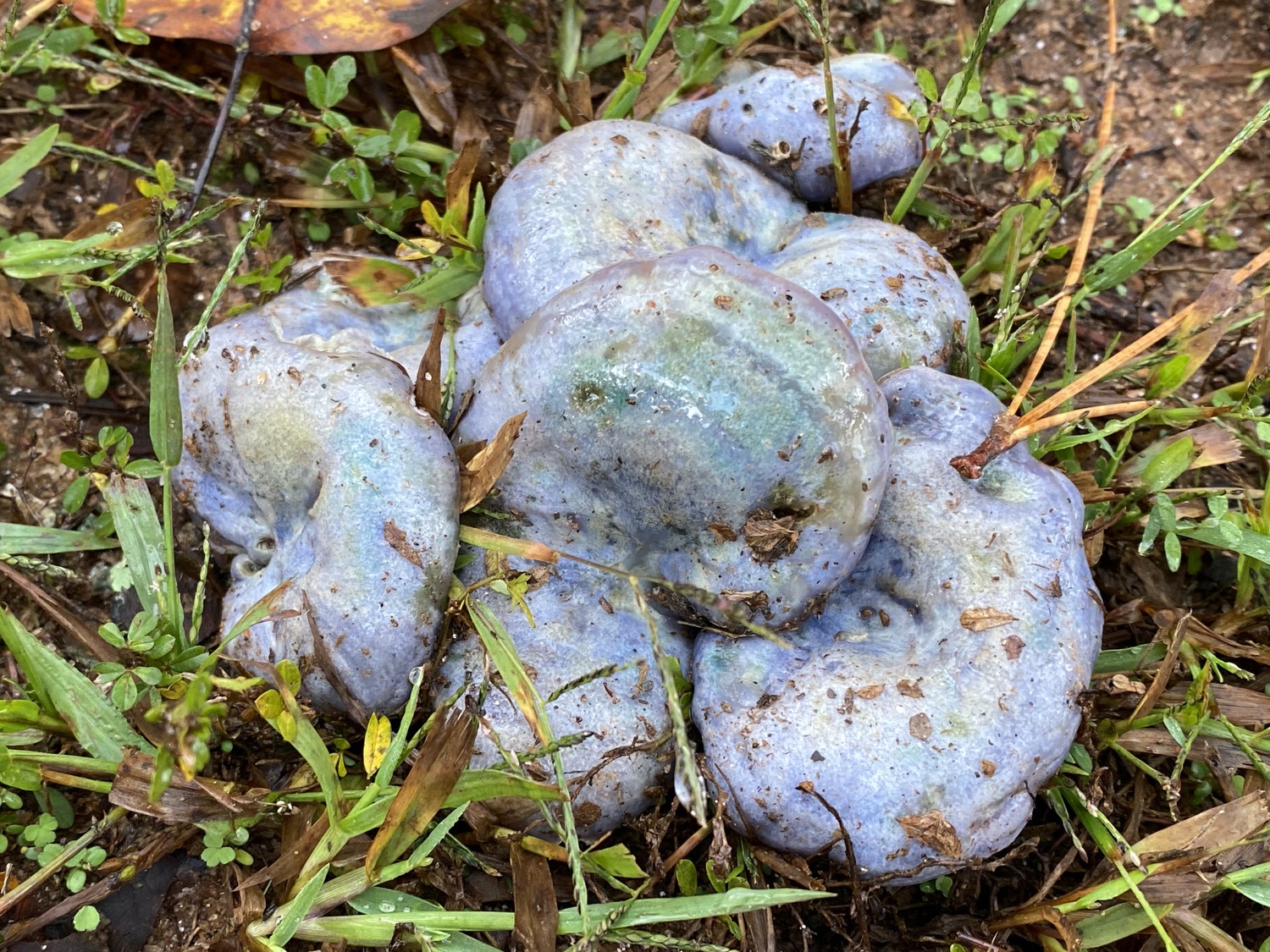
These were growing on a lawn under pine trees (you can see pine needles in most of the pictures), typical for the species. Late Fall is reported to be the time to find these, and they are reported to be common in the southern United States. Many of the ones we saw were growing in clumps, but some grew individually.
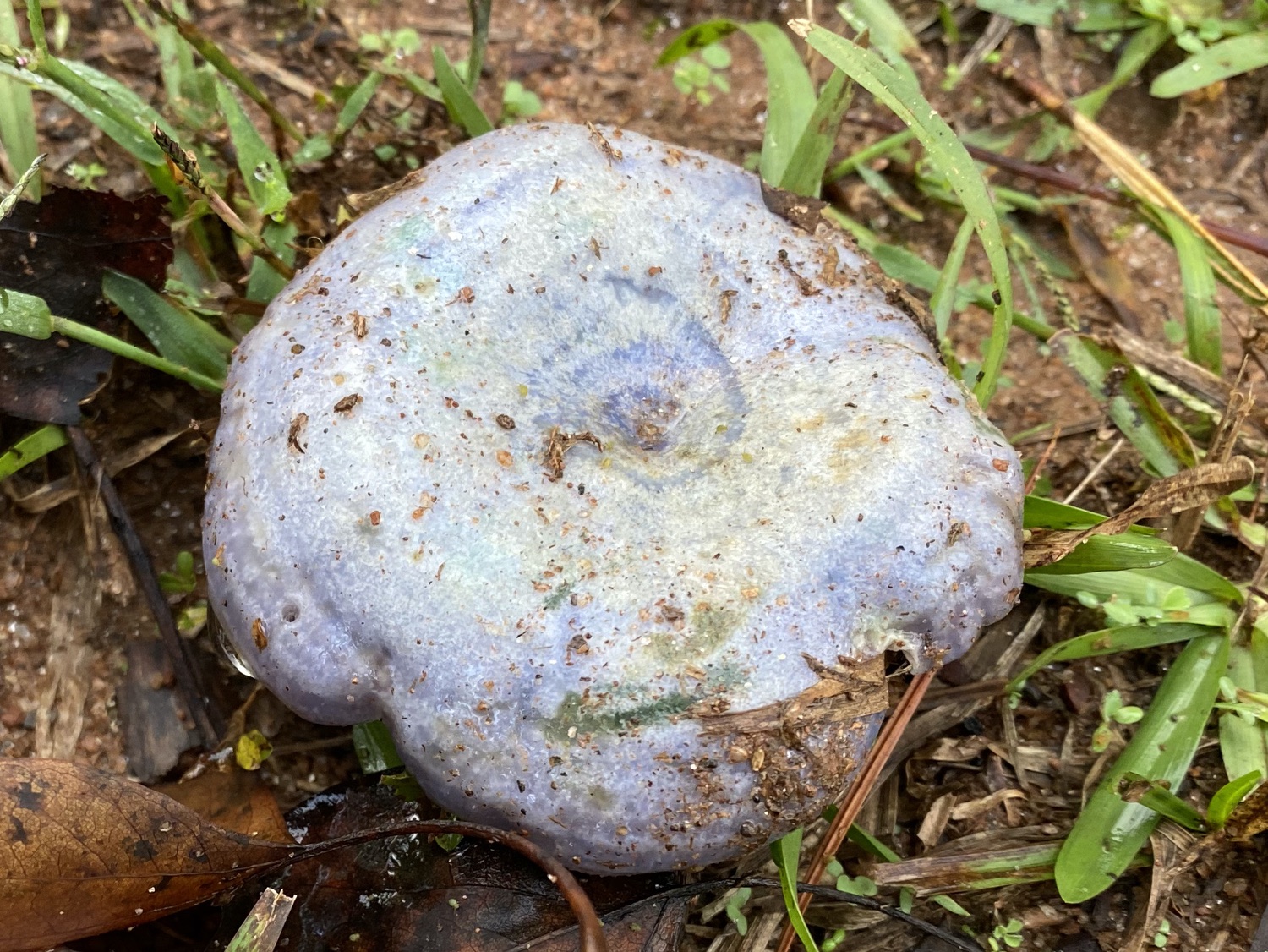
The gills appear white at first glance, but on closer look are a pale pinkish purple. The color of the gills and the cap are reported to vary widely in intensity.
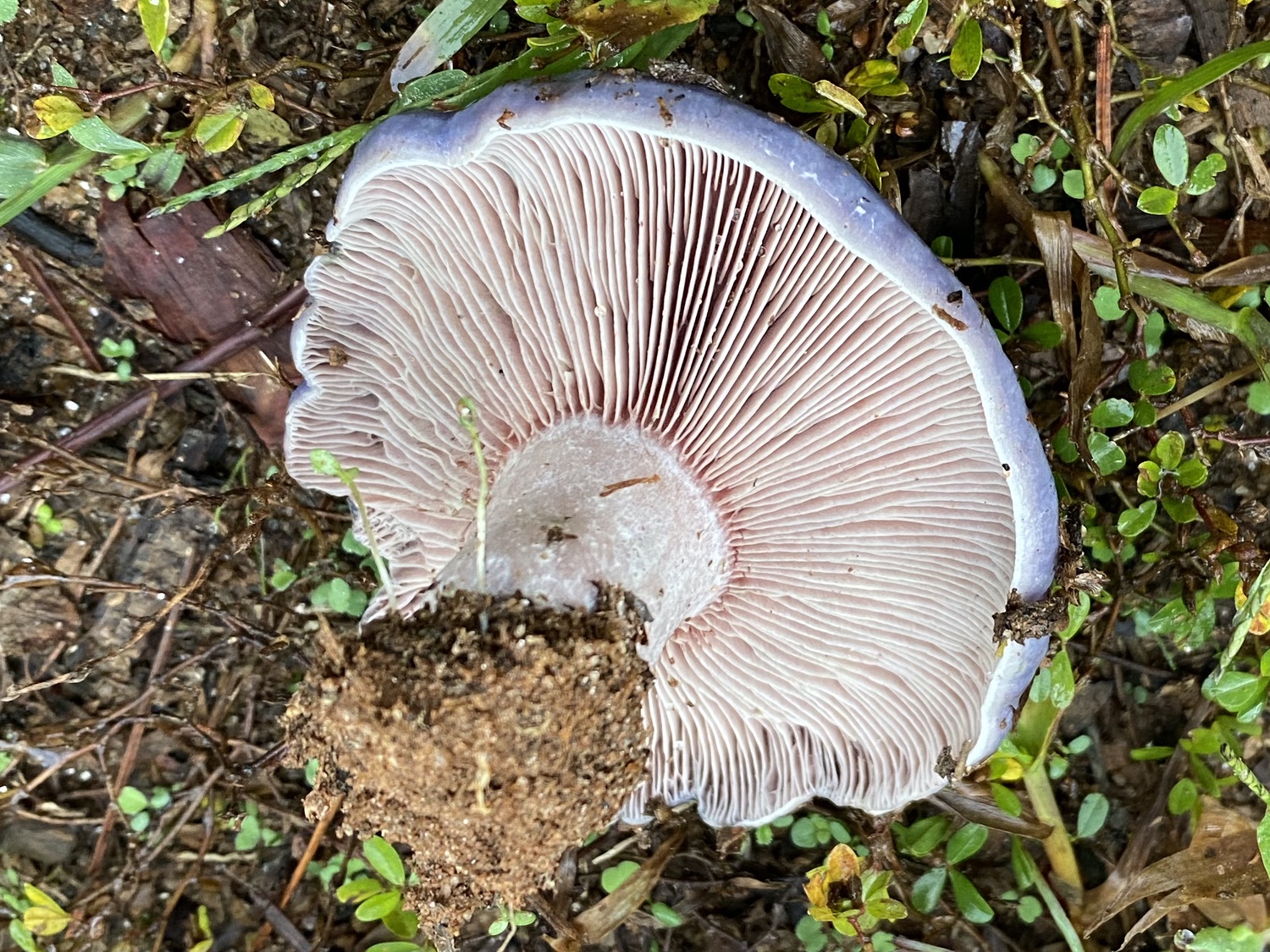
The gills extend somewhat down the stalk (or stipe), what mushroom experts call decurrent gills. The stem is stout, about 1–1½ cm wide, and short about 4 cm. Notice the downcurved edges to the cap.
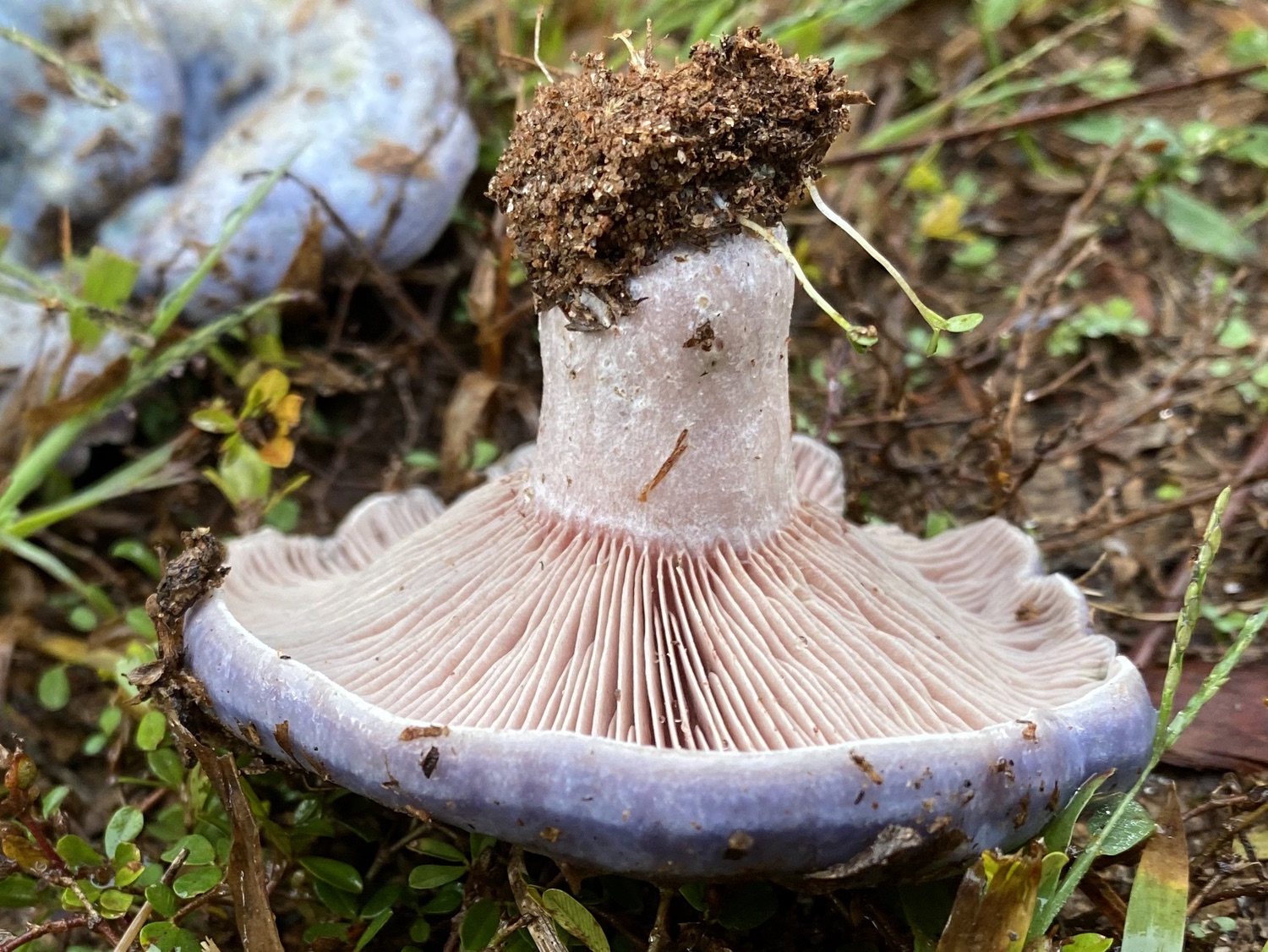
Cutting it open did not produce the latex typical of milkcaps, although the milk from this species is described as “very scant” by Kuo (2016). Cutting it did reveal the typical rusty reddish color just below the gills and around the periphery of the stipe, just below the surface. Also, the stem is porous with hollows, as is typical for the species.
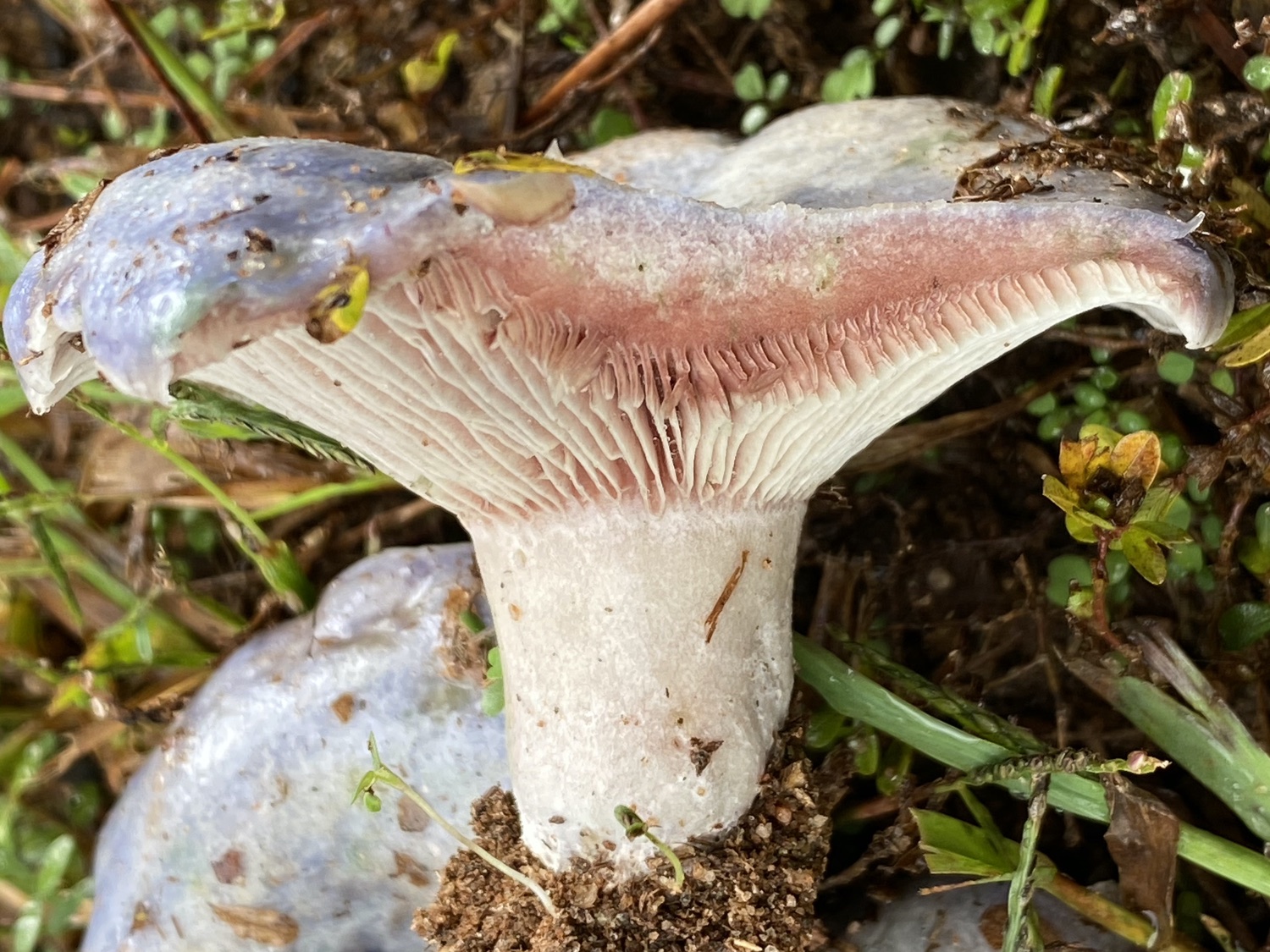
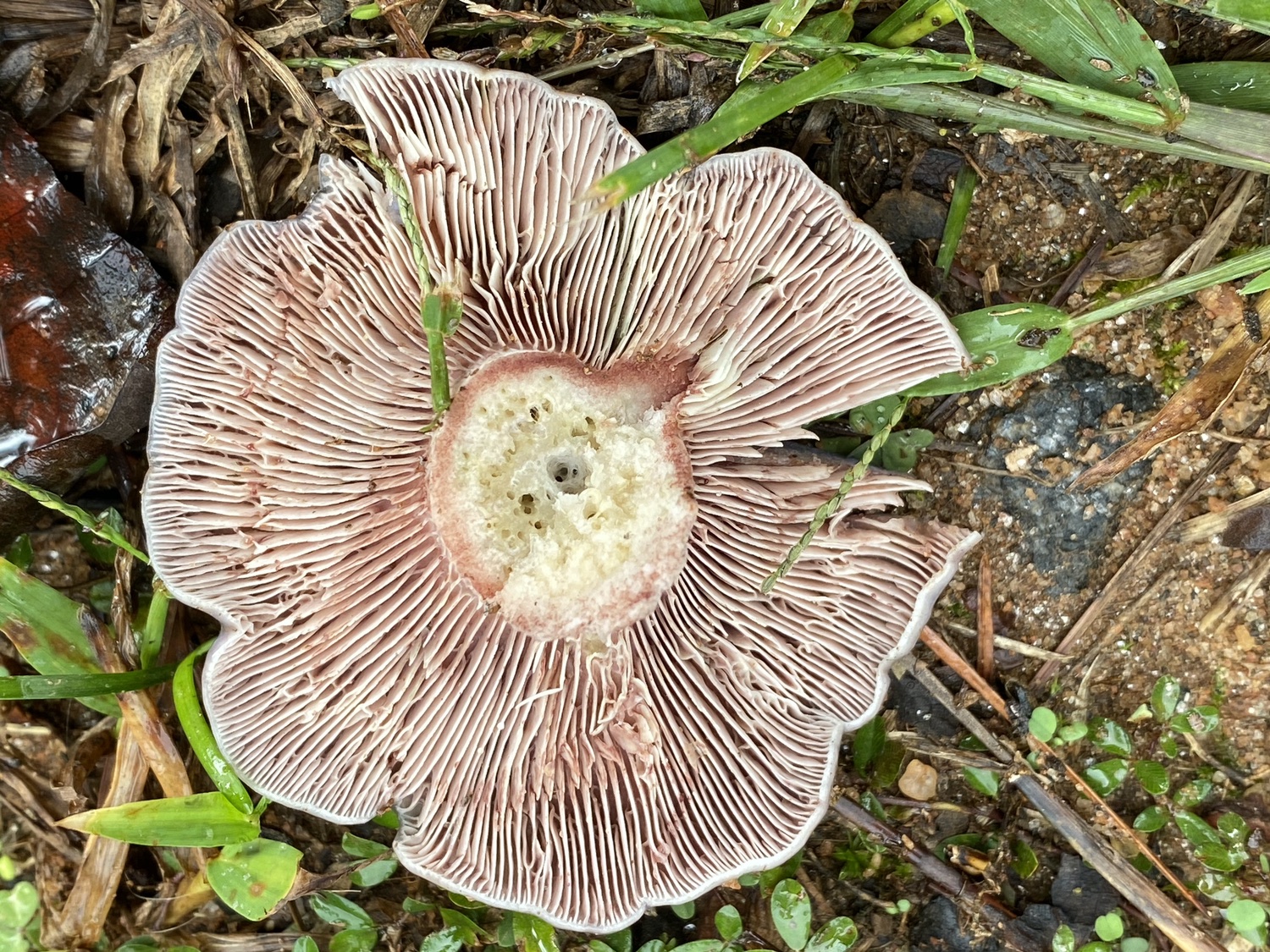
Kuo (2016) describes the taste as “mild, not distinctive”. Related milkcaps, like the Indigo Milky (Lactarius indigo) are described as ranging in taste from choice to mediocre by Woehrel and Light (2017). Regardless, this does not look like something I’d want to eat!
References
Kuo, M. 2016. Lactarius paradoxus. MushroomExpert.com web site: http://www.mushroomexpert.com/lactarius_paradoxus.html
Woehrel, M. L., and W. H. Light. 2017. Mushrooms of the Georgia Piedmont & Southern Appalachians. University of Georgia Press, Athens.
TexasMushrooms.org. This is the only source that I found that reported a common name for this species.